- 1635 Uncas Becomes Chief
- 1643 Indian Leap at Yantic Falls
- 1659 Deed to Norwich
- 1659 The Nine-Miles Square
- 1659 Northwest Cornerstone
- 1659 Northeast Cornerstone
- 1659 Southeast Cornerstone
- 1659 Southwest Cornerstone
- 1775 George Washington Visits Norwich
- 1784 Norwich Incorporated
- 1797 John and Abigail Adams Visit Norwich
- 1801-1865 Norwich Arms Company
- 1818-1822 Scottish Cotton Factory
- 1833 Andrew Jackson Visits Norwich
- 1840-1969 Norwich Train Station
- 1840-1898 Norwich and Worcester Railroad
- 1842-1847 Allen and Thurber
- 1848-1861 New London Willimantic & Springfield Railroad
- 1848 Abe Lincoln's 1st Visit to Norwich
- 1850-1851 The Rose of New England
- 1851-1868 Wawecus Hill Mining Company
- 1859 Norwich Bicentennial Celebrationem
- 1860 Abe Lincoln's 2nd Visit to Norwich
- 1861-1948 Edith Roosevelt
- 1861-1871 New London Northern Railroad
- 1865-1988 Yantic Woolen Mill
- 1866-1972 Ponemah Mills
- 1871-1896 Central Vermont Railroad
- 1875-1879 Hood Fire Arms Company
- 1880-1882 Osgood Gun Works
- 1890 Cochegan Rock
- 1895 Gardner Lake Sunken House
- 1896-Present New England Central Railroad
- 1898-1914 Alvah E Grimes Firearms
- 1898-1969 New Haven Railroad
- 1900-1935 Norwich Street Railway
- 1903-1904 Horse Racing on Thames River
- 1904-1996 Norwich State Hospital
- 1906-1922 Norwich & Westerly Railway
- 1907 Buffalo Bill Visits Norwich
- 1907 Norwich & Westerly Railway Wreck
- 1909 Dirigible Flies in Norwich
- 1909 President Taft Visits Norwich
- 1947 Rose Garden Dedicated
- 1948 Harry Truman Visits Norwich
- 1952 Norwich Consolidated
- 1952 VP Candidate Richard Nixon Visits Norwich
- 1954 USS Nautilus Launch
- 1956 VP Richard Nixon Visits Norwich
- 1959 Norwich Street of Gold
- 1976-Present Providence & Worcester Railroad
- 1994 Bill Clinton Visits Norwich

1635 Uncas Becomes Chief
Most people believe that American Natives chased their food source,
mainly the Woolly Mammoth, through the Bering Straits Land Bridge
and that our people then came across and down into what
are now the Great Lakes and the Hudson River Valley. This group of Monheags
ended up along the Quinatucquet River, which later became
known as the Connecticut River in what is now Connecticut.
The Dutch called them the Pequins,
then the French changed their name to Pequods
and the English changed it to Pequot’s.
Later when the English showed up on the Quinatucquet and
Pequot Rivers, Sachem Wopigwooit was the leader of the tribe.
After his passing, the people then chose Sasscus as leader,
instead of Uncas who should have rightfully been Sachem,
hoping that he would force the English back into the ocean.
Sasscus like the Niantic’s and the Narragansett’s hated
the English and was at war with them constantly.
War chief Uncas, who was Sasscus's son in law, tried to reason
with Sasscus and the people, but they would not listen to him. So Uncas took all who wished to go with him,
across the Pequot River, to the Caucheganvillage.
Acknowledgements
Sachem Walkingfox
wpclipart
RND

1643 Indian Leap at Yantic Falls
On September 17th, 1643, The Battle of the Sachem’s Plain brought Narragansett and Mohegan warriors to Yantic Falls, a popular Mohegan fishing and gathering place. Narragansett and Mohegan runners chased one another to a chasm that overlooks the Yantic River. Uncas sent his fastest runner, Tantaquidgeon, to apprehend the Narragansett Sachem Miantonomo, who was weighed down by a gift of English armor. According to tribal tradition only a Sachem can capture another Sachem. Abiding by this tribal protocol, Tantaquidgeon thus held Miantonomo until Uncas’s arrival. Uncas made the long jump across the chasm, which was at that time narrower before modern-day erosion. Some warriors failed to reach the other side, falling to their deaths on the rocks below.
Acknowledgements
WalkNorwich.org
Instagram #iheartconnecticut
RND
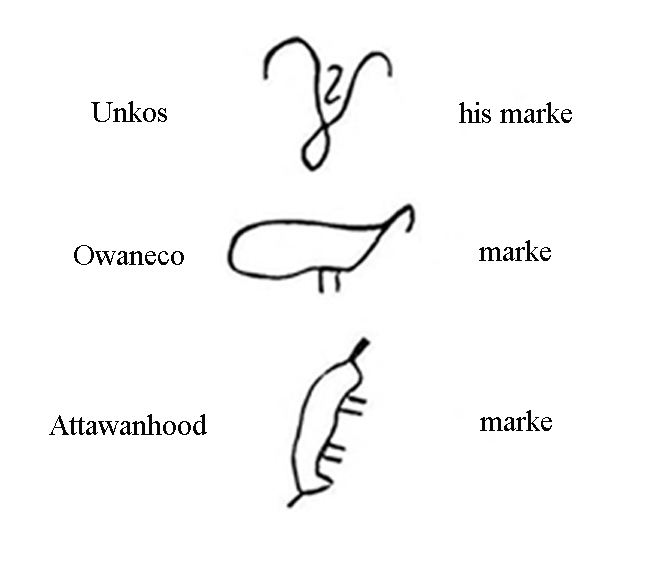
1659 Deed To Norwich
The image on the left illustrates the signatures (marks) of the Mohegan signers on the deed to Norwich.
The following is a transcript of the deed to Norwich, signed by Uncas and others.
"Know all men that Onkos, Owaneco, Attawanhood, Indians of Mohegan, have Bargained, sold, and passed over, and doe by these presents sell and pass over unto the Towne and Inhabitants of Norwich nine miles square of land lying and being at Moheagan and the parts thereunto adjoyneing, with all ponds, rivers, woods, quarries, mines, with all royalties, privileges, and appurtenances thereunto belonging, to themthe said inhabitants of Norwich, theire heirs and successors forever-the said lands are to be bounded as followeth, (viz.) to the southward on the west side of the Great River, ye line is to begin at the brooke falling into the head of Trading Cove, and soe to run west norwest seven miles-fron thence the line to run nor north east nine miles, and on the East side the afores'd river to the southward the line is to joyne with New London bounds as soe from thence the line is to run nor noreast nine miles and from thence to run nor norwest nine miles to meet with the western line.-In consideration whereof the sd Onkos, Owaneco and Attawanhood doe acknowledge to have received of the parties aforesd the full and juste sum of seventy pounds and doe promise and egage ourselves, heirs and successors, to warrant the sd bargin and sale to the aforsd parties, their heirs and successors, and them to defend from all claims and molestations from any whatsoever.-In witness whereof we have hereunto set to our hands this 6th of June, Anno 1659."
Acknowledgements
“History of Norwich, Connecticut: From Its Possession From the Indians, to the Year 1866”
by Francis Manwaring Caulkins
“History of Norwich, Connecticut: From Its Possession From the Indians, to the Year 1866”
by Francis Manwaring Caulkins
RND
1659 The Nine-Miles Square
The map below shows the location of the original nine-mile square, as it was defined on the deed to Norwich. The present-day boundary is also shown.
You can zoom and pan the map, using a cursor, to see more detail.
More information about the four cornerstone markers is also provided in placemarks below.
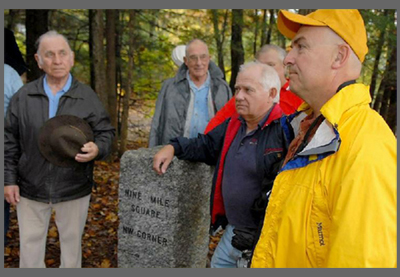
1659 Northwest Cornerstone
The monument marks the northwest corner of land purchased from Mohegan Chief Uncas in 1659 for 70 pounds of sterling. The borders of Norwich, when it was founded nearly 350 years ago, measured roughly nine miles on each edge. The spot where the stone was placed, near the Shetucket River, is the approximate location, Tollmann said. The best guess is the original location was flooded when the Scotland dam was constructed, which widened the river. So it’s now somewhere under water, Tollman said.
Acknowledgements
Norwich Bulletin 10/20/2007
Norwich Bulletin 10/20/2007
RND
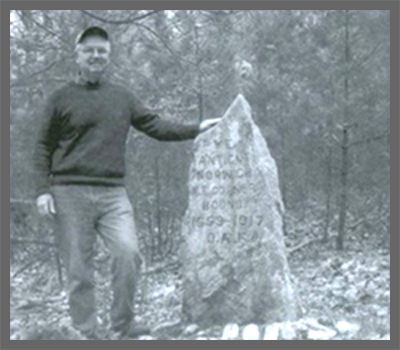
1659 Northeast Cornerstone
When the town of Norwich was founded in 1659, the boundary markers for the land were commonly referred to as the “Nine Miles Square.” According to Daniel Phillips’ History of Griswold, in 1916 the Anne Brewster Fanning Chapter of the Daughters of the American Revolution took it upon themselves to identify and restore the ancient Norwich N.E. corner marker located in Griswold/Plainfield.
Acknowledgements
The Forgotten Founders
The Forgotten Founders
RND

1659 Southeast Cornerstone
The Southeast cornerstone is near Rose Hill in Ledyard
Acknowledgements
Norwich Bulletin 08/05/2017
Norwich Bulletin 08/05/2017
RND
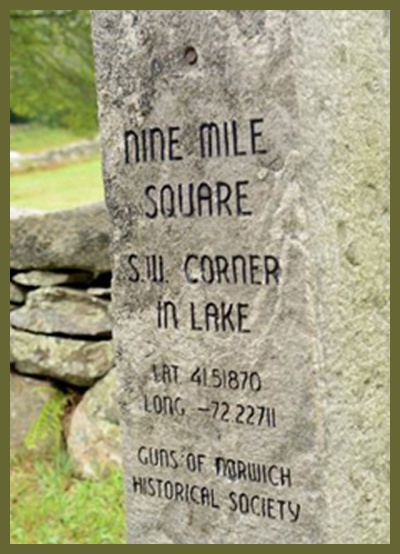
1659 Southwest Cornerstone
The southwest marker isn’t in the exact location of the southwest corner, instead sitting on the corner of Lake Road and Witter Road, directly in front of 40-year Bozrah resident Herb Zickwolf’s horse farm. The granite stone, however, is engraved with the coordinates of the true corner, which sits somewhere in the middle of nearby man-made Gardner Lake.
Dating back to the early 1800s, the monument itself is even a piece of history. The granite came from Olde New England Building & Salvage Co., owned by Pianka, who said it was removed from the home of former Connecticut Gov. John Samuel Peters in Hebron.
Acknowledgements
Norwich Bulletin 08/05/2017
Norwich Bulletin 08/05/2017
RND
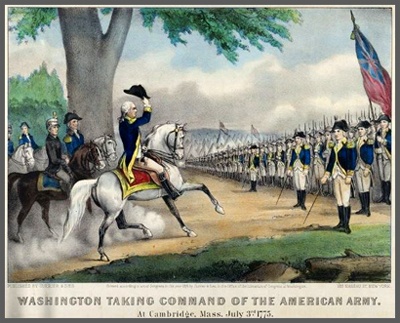
1775 George Washington Visits Norwich
The image above depicts the day that George Washington assumed command of the American army on July 3,1775 in Cambridge, Massachusetts. The
image was created by Currier & Ives in 1876.
Four days earliar he and several members of his staff probably stayed in Norwich on the night of June 30, 1775. It is believed that he stayed in the first brick building built in Norwich, on the corner of (what was then), Main and Union Street. The public house, where he stayed, later became famous as an auction stand.
Acknowledgements
The MET
RND
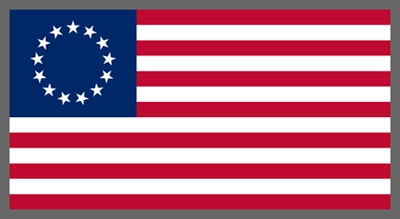
1784 Norwich Incorporated
Great Britain formally recognized the United States as an independent nation on September 3, 1783
by signing the Treaty of Paris. The “Betsy Ross Flag”, with its 13 stars and stripes representing the former colonies,
was flown proudly in Norwich. However, prior to that time only five towns had been officially designated as cities. New York
and Albany were made cities in the seventeenth century. Philadelphia followed in 1701.
Richmond, Va., was incorporated in 1782, and Charleston S.C. in 1783.
In the year 1784, the government of Connecticut incorporated five additional cities. The General Assembly, at its January
Session, granted such privileges to New Haven and New London. In its May session, Hartford,
Middletown, and Norwich were also incorporated. These are now the oldest municipalities in New England.
None of the Connecticut group had over 4,000 inhabitants within the territory incorporated. Using their
ships, all of them had conducted limited trade before the Revolutionary War, thus, they were acquainted
with commercial life
Acknowledgements
“The Colonial History of Hartford”, by Rev. William DeLoss Love, 1914, Chapter 20, page 343
By DevinCook / Created by jacobolus using Adobe Illustrator, and released into the public domain. – I created this image using historical descriptions (commonly known). Inkscape was used to create the SVG., Public Domain, Link
RND

1797 John and Abigail Adams Visit Norwich
John Adams, the 2nd President of the United States, and his wife Abigail, stayed in Norwich on Wednesday, August 1, 1797.
The Matross company welcomed them in full uniform and fired a sixteen gun salute.
They stayed in a tavern/hotel kept by Jesse Brown that was renowned for its good dinners. The building located at
77 East Town Street, now houses the United and Community Family Services.
It is interesting to note that during the early part of the Revolutionary War, Jesse Brown was in the service of the State as confidential messenger and express agent.
Acknowledgements
“History of Norwich, Connecticut: From Its Possession From the Indians, to the Year 1866” by Frances Manwaring Caulkins
“Old Houses of the Ancient Town of Norwich, 1600-1800” , 1895, page 364
by Mary Elizabeth Perkins
RND

1801-1865 Norwich Arms Company
The Norwich Arms Company was the first major arms producer in Norwich.
With the tools and machinery that the Norwich Arms Company had in 1864, they were able to produce about 400 finished muskets per day, or 200 of the Springfield arms, and breech-loading rifles. The company produced about 1200 muskets, 3000 bayonets, and 2000 locks, beside the rifles and carbines, per week. In the mid 1850s the value of their product reached nearly $250,000 annually in their yield of 400 muskets or arms daily, at the Government price of $20 each.
Acknowledgements
RND

1818-1822 Scottish Cotton Factory
The Backus family had an ironworks here in the colonial era. Very early in the 19th century, a sawmill, gristmill, and carding machine powered by a mill dam were located in Yantic. From 1818 to 1822, agents for a Scottish businessman purchased the site and built a cotton factory.
Acknowledgements
New England Yard & Pattern
RND
RND

1833 Andrew Jackson Visits Norwich
During the summer of 1833, President Andrew Jackson decided to tour a portion of the Eastern states. Accompanying him would be the Vice President Martin Van-Buren and several other dignitaries.
About that same time, many citizens in Norwich had been anxious to erect some sort of memorial of respect for the Mohegan Sachem, Uncas. As word reached Norwich regarding the president’s tour, residents decided to make an effort to connect President Jackson’s travel plan with a ceremony featuring the president laying the cornerstone of a monument honoring Uncas.
On June 24, 1833 the presidential party came from Hartford by land, arriving by the Essex Turnpike in open coaches, guided by a colorful and brilliant escort of cavalry that had left Norwich to meet the party. At the cemetery they were greeted by a large segment of local citizens, more than one military company, groups of children with appropriate banners and a number of Mohegan Indians. President Jackson moved the foundation-stone into its place. One reporter later wrote that it was “a token of respect from the modern warrior to the ancient warrior.” (Uncas had died some 149 years previously, in 1684).
The granite column seen on the site today was dedicated in 1842.
Acknowledgements
Norwich Bulletin 04/16/2018
Bureau of Engraving and Printing
RND

1840-1969 Norwich Train Station
With four daily passenger and freight connections each way to Worcester, Norwich became a major transportation center with steamboat shipping to New York City through Long Island Sound. In fact the preferred Boston to New York route was via the Norwich and Worcester Railroad through Norwich.
Until the Thames River was bridged in 1889, Chelsea Harbor had full warehouse and passenger terminals with its favorable access to central New England.
Acknowledgements
Norwich Bulletin 05/23/2010
Amazon
RND
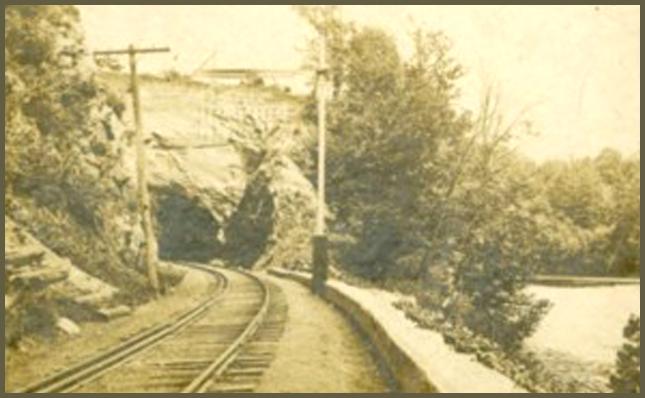
1840-1898 Norwich & Worcester Railroad
Business leaders in Norwich saw an opportunity to share in the economic boom associated with railroads and organized a stock company to construct a railroad linking Long Island Sound with Boston via Norwich and Worcester. Construction at Norwich began November 18, 1835. Within a year, Massachusetts interests had secured approval for the necessary rail link from Worcester to Boston. This combined effort, known as the Norwich & Worcester Railroad, threaded its way north through the Quinebaug Valley of eastern Connecticut to Worcester, then east to Boston.
When the Norwich & Worcester line opened for travel in 1840 it boasted one of the first railroad tunnels in the country. Its creation involved skillful engineering, copious amounts of blasting powder, and strong backs. Within a decade, the line began constructing its own locomotives and cars in a large shop in Norwich. The company also owned a succession of fine passenger steamers like the City of Worcester and City of Lowell.
The New Haven Railroad inherited a substantial operation when it took control of the Norwich & Worcester in 1898. Today the line, long since extended to Groton, is part of the Providence & Worcester Railroad’s regional freight system.
Acknowledgements
Richard Malley, Your Public Media
Connecticut Historical Society
Connecticul Historical Society
RND
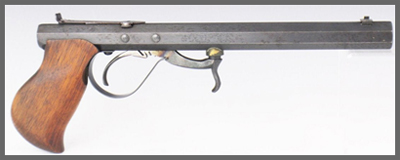
1842-1847 Allen and Thurber
Ethan Allen was a major American arms maker from Massachusetts. He is unrelated to the revolutionary Ethan Allen. His first firearm, the "Pocket Rifle" was developed in 1836, and his first patent was granted in 1837. In 1843 the company relocated to Norwich, Connecticut. In addition to armsmaking, they built prototypes of Thurber's typewriter designed for the blind, disabled and those “nervous” about writing by hand
The Pocket Rifle was a single-shot under-hammer percussion pistol. The name likely derives from the fact that most pistols of the day did not have rifled barrels, rather than any claim to extraordinary size. The hammer located on the bottom of the weapon allowed for target sights to be mounted on the top axis of the barrel. Made in .28 to .44 caliber, average barrel length was 12 inches. Typically sold in pairs, the pocket rifle was produced in Norwich during 1837–1847.
The exact location of his shop in Norwich is unknown.
Acknowledgements
Wikipedia
Wikipedia
www.liveauctioneers.com
RND

1848-1861 New London Willimantic & Springfield RR
The New London, Willimantic and Springfield Railroad was chartered in May 1847 to build from New London on the Long Island Sound north through Willimantic to Springfield, Massachusetts. On April 10, 1848, the name was changed to the New London, Willimantic and Palmer Railroad with the shift of the north terminus to Palmer. The first section, from Norwich north to Willimantic, opened in September 1849, and the part from Norwich south to New London opened the next month. The part north to Stafford opened in March 1850, and the rest of the way to Palmer opened in September of that year.
Acknowledgements
Wikipedia
Railway & Locomotive Historical Society
sites.google.com
RND
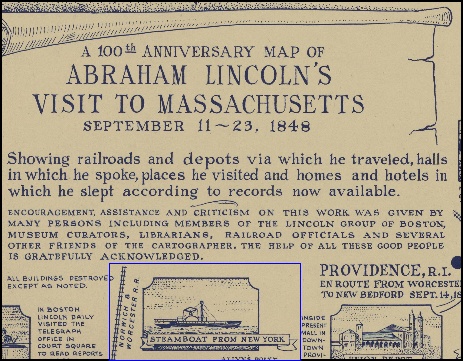
1848 Abe Lincoln's 1st Visit to Norwich
On September 11, 1848, Congressman Abraham Lincoln landed at Norwich, Connecticut after taking a steam ship from New York City. He was destined for Massachusetts to help rally that state’s Whigs behind the presidential candidacy of Zachary Taylor. He gave no known speeches in Connecticut, taking the railroad north to Worcester, where Bay State Whigs were holding a convention. It was Mr. Lincoln’s first visit to Connecticut, and he would not return for more than 11 years.
Acknowledgements
Norwich Bulletin 01/07/2018
Library of Congress
RND

1850-1851 The Rose of New England
Many have speculated about how Norwich got its nickname, "The Rose of New England". However, on May 24, 1909 The Norwich Bulletin wrote :
At last, we have authentic information that Henry Ward Beecher was the author of ‘The Rose of New England,’ and Edward T. Clapp was the perpetuator of it. In the year 1850 or 1851, when the late Henry B. Norton was returning from abroad on an ocean liner, he made the acquaintance of Henry Ward Beecher.
Mr. Beecher was then a contributor to the New York Independent, and while spending the day with Mr. Norton in Norwich, entered the greenhouse at the foot of the garden and wrote the letter to that paper that first called Norwich ‘The Rose of New England'.
Acknowledgements
Norwich Bulletin 04/24/2010
RND
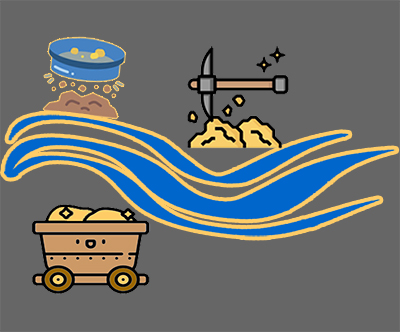
1851-1868 Wawecus Hill Mining Company
In the early 1850's several Norwich residents were convinced that gold and other precious metals had been found in the northwestern part of Norwich. A start-up company, headed by Jesse Fillmore, sold mining rights.
Quote from information source :
"The Waweekus Hill Mining Company was first formed in 1851, and has since been organized with a capital stated at $500,000; Jesse Fillmore of Providence, President. This company is based upon the supposition that the rocks where it is located contain gold, silver, and nickel, and a lease for 100 years of about 100 acres os land , covering the location, has been obtained."
"The idea of the metalliferouse quality of the rocks was first suggested by G. M. Roberts, a young man whose attention was arrested to the subject by what seemed to him smell of sulphur whe the rock was broken. Reuben Safford, the agent of the company, has dwelt for a considerable time alon upon the premises, and, has make repeated essays in digging and exporing the bed of rock, where the mine is suppored to be situated. The smelting and reclaiming process has not been initiated, and no pure metal has yet been discovred or produced."
The Company never produced any gold, silver, nickel, or copper. But ... the brook that runs through the area still bears the name proudly,
"Goldmine Brook".
Acknowledgements
“History of Norwich, Connecticut: From Its Possession From the Indians, to the Year 1866”
by Frances Manwaring Caulkins
RND
RND
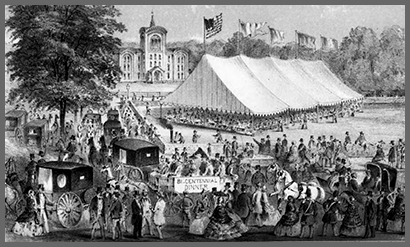
1859 Norwich Bicentennial Celebration
The image is of the Bicentennial Dinner Tent in front of the Norwich Free Academy.
The photo was taken from John W. Stedman's book,
"The Norwich Jubilee: A Report of the Celebration at Norwich, Connecticut, on the Two Hundredth Anniversary of the Settlemeent of the Town, Septiember 7th and 8th, 1859"
This depiction of the bicentennial dinner in Norwich conveys the popularity of the event. The dinner tent housed a 80' x 200' dance floor. A ball, where the women wore Colonial garb - long skirts
with aprons and bonnets, and the men wore beards and Abe Lincoln stove-pipe hats, capped the bicentennial celebration.
Acknowledgements
RND
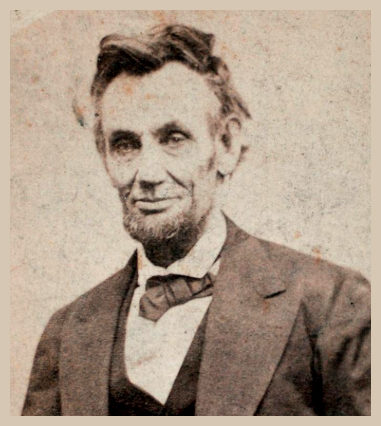
1860 Abe Lincoln's 2nd Visit to Norwich
It is said that Abe Lincoln spent the night of March 9, 1860 in the Wauregan Hotel. He was here to campaign for himself, and his good friend Gov. William Buckingham. It’s widely accepted among historians that his speeches in Norwich in March 1860 helped him clinch the 1860 Republican presidential nomination. The Norwich Bulletin wrote that City Hall was packed on March 9, 1860, and that “Mr. Lincoln was received upon his entrance into the hall with storms of applause, loud and prolonged, and when he was introduced by Mr. Lamb, the enthusiasm of the audience knew no bounds. ... Some minutes elapsed before the applause subsided sufficiently to allow him to commence his address.”
Acknowledgements
The Forgotten Founders
Norwich Bulletin 03/09/2010
RND

1861-1871 New London Northern RR
The New London Northern Railroad was a part of the Central Vermont Railway from New London, Connecticut, north to Brattleboro, Vermont. After a long period with the Canadian National Railway, it is now operated by the New England Central Railroad. The New London Northern was the only through railroad in Connecticut not to come under the control of the New York, New Haven and Hartford Railroad.
The locomotive shown in the photo is the New London Northern 20 "Benjamin Stark". It was later named the Central Vermont 170. It was built by the Manchester Locomotive Works in 1872 and scrapped in 1899.
Acknowledgements
Wikipedia
Charles Fisher
sites.google.com
RND
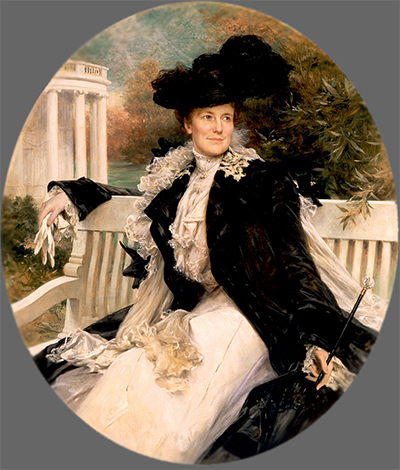
1861-1948 Edith Roosevelt
Edith Kermit Carow was born in Norwich on August 6, 1861. She was born in her maternal parent's mansion, 130 Washington Street. Her middle name
was the surname of a paternal great-uncle Robert Kermit. She married Theodore Roosevel Jr on December 2, 1886 who becme the 26th President of the United States
in 1901. She gave birth to four sons and one daughter.
Edith led a very interesting life. In 1869-1871 she was schooled in the Dodsworth School for Dancing and Deportment, in New York City. In 1871-1879 she attended
the Louise Comstock Private School, also in New York City. As a child, she attended private kindergarten and primary school at the Theodore Roosevelt Sr.
home on Park Avenue in New York City.
She joined Theodore in many outdoor sporting activities, such as tennis, swimming long-distance, bicycling, and rowing. She also became an expert horsewoman.
Acknowledgements
National First Ladies Library
Historic Buildings of Connecticut
By Théobald Chartran
http://www.whitehouseresearch.org/assetbank-whha/action/viewHome
RND
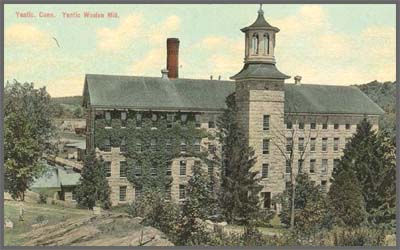
1865-1988 Yantic Woolen Mill
The mill complex dates to 1865, when it was built by E. Winslow Williams on the site of an older mill, built by his father, which had been destroyed by fire.
The mill was the economic engine of Yantic well into the 20th century, with textile production ending in 1988. It originally produced flannel, employing 150 workers at its peak output.
The mill was operated by the Hale Manufacturing Company in the 1980's. They produced yarn for automobile upholstery fabric.
Acknowledgements
New England Yard & Pattern
Wikipedia
RND
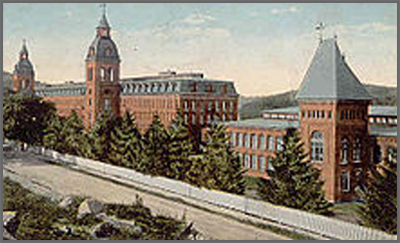
1866-1972 Ponemah Mills
Construction of the great Ponemah Cotton Mill began in 1866. A group of investors, led by Edward and Cyrus Taft of Providence, Rhode Island, purchased a 600 acre farm on the Shetucket River. The first mill was 750 feet long and 74 feet wide. It began operation in 1871. The name “Ponemah” was taken from Longfellow’s poem, Song of Hiawatha, and was said to mean “our hope.” The mill owners built a village to house the workers, naming it Taftville after the principal investors. The main street of the new village was named Providence Street.
The Ponemah Mill spun and wove imported Egyptian cotton into very high quality cloth for the luxury trade. A bitter strike in 1875, led to the eviction of mill workers who were mostly comprised of Irish Americans. New workers were recruited from French Canada. Taftville became noted as a French Canadian community.
Major expansions of the mill were made in 1884, 1902, and 1910. At its peak, the Ponemah Mill employed 1600 workers and produced over 20 million yards of cloth a year. They boasted that a pound of cotton could be spun into a single strand of yarn 100 miles long. In the 20th century, the mill successfully converted to the production of synthetic fabrics. It was closed in 1972; one of the last great New England mill to shut down. Today, a variety of stereophonic equipment, woolen yarn spinning, and automated production control equipment, as well as a number of retail shops, occupies its space.
Acknowledgements
The Forgotten Founders
Wikipedia
RND
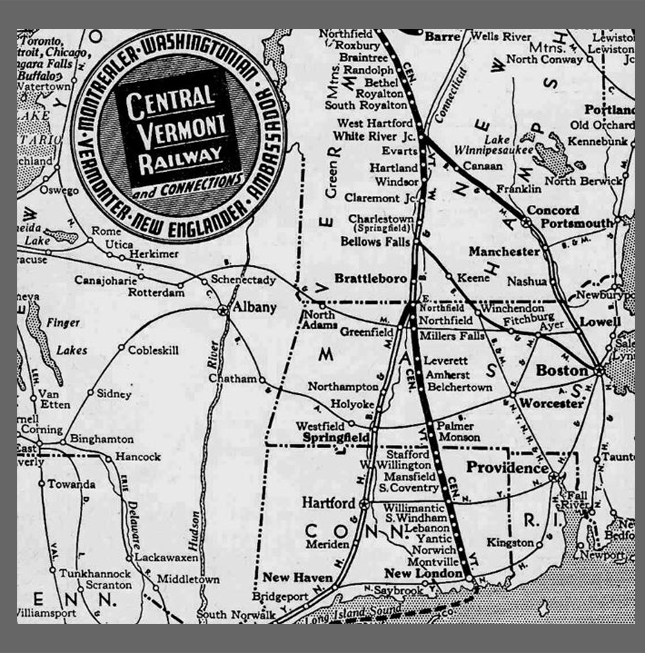
1871-1896 Central Vermont Railway
The Central Vermont Railway was a railroad that operated in the U.S. states of Connecticut, Massachusetts, New Hampshire, New York, and Vermont, as well as the Canadian province of Quebec.
It connected Montreal, Quebec, with New London, Connecticut, using a route along the shores of Lake Champlain, through the Green Mountains and along the Connecticut River valley, as well as Montreal to Boston, Massachusetts, through a connection with the Boston and Maine Railroad at White River Junction, Vermont.iption
Acknowledgements
Wikipedia
American Rails
RND
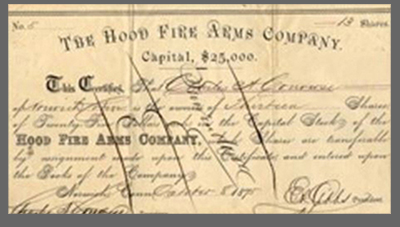
1875-1879 Hood Fire Arms Company
The Hood Fire Arms Company was active from 1875-1879. Formed by Freeman W. Hood, the company employed 65 people and made about 2,500 guns a month. Hood also controlled the Norwich Arms Co. and the Norwich Lock Manufacturing Co. He further had interest in the Continental Arms Co. and the Bacon Manufacturing Co.
The Company used a variety of firearms and related components patents that were issued to Freeman W. Hood.
Acknowledgements
RND
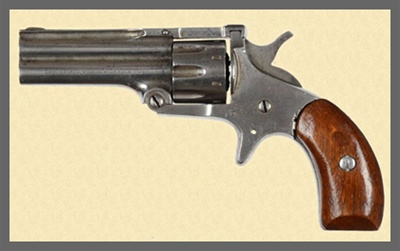
1880-1882 Osgood Gun Works
Osgood Gun Works was the maker of the Duplex (a.k.a. Monarch) rimfire revolver. The company formed in 1880 for the sole purpose of making the Duplex. It was a partnership between financial backer Osgood and patentee Freeman W. Hood.
The Duplex revolver was a modernized version of the better known Le Mat of the Civil War period, which had carried a shotgun charge in a separate central barrel forming the cylinder axis pin. Eight-shot single action hinged frame.22 Short rimfire Duplex guns have an additional .32 calibre barrel - forming the cylinder arbor - which extends back through the frame to chamber a single .32 Short rimfire cartridge. The hammer had a moveable firing pin; set in the upper position it fired the .22 cartridges in the cylinder chambers in the usual manner.
Hood failed in 1882 as a result of poor sales.
Acknowledgements
Springfield Armory Museum
“Pistols of the World ” by Ian Hogg & John Weeks, 1992
Simpson Ltd
RND
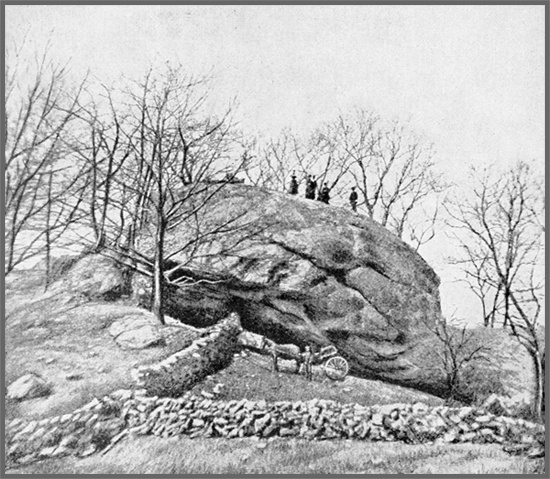
1890 Cochegan Rock
Quote from the Mohegan Sachem Walking Fox:
Cochegan/Cauchegan Rock has been over looked
for many years now and I like it that way.
Cauchegan rock is the largest rock in Mohegan land.
The unique setting of the rock, was the main reason that it was
used so often as a meeting place by Uncas and his followers.
In the spring and for most of the summer, the tribe used it
and the land around it, for one of their many villages.
Often times, the trees would be used where they stood,
to form long and roundhouses.
The villages were surrounded by fresh water for drinking,
gardening, washing, etc., while, the nearby Pequot River
provided an abundant supply of fish and clams.
My Grandfather told me that the tribe would often
put tables and chairs on top of Cauchegan Rock
when they held their meetings.
This would also allow them to see anyone
coming towards them from great distances.
In the colder weather, the tribe would use the rocks
and trees in the area to shelter them from the winds.
The warmer weather was used for gardening.
The first Pau-was of the new season would begin at
the rock with fellowshipping, before going on to
the Great River to Pau was with other tribes."
Acknowledgements
Sachem Walkingfox
Popular Science Monthly Volume 37D210, page 198
RND

1895 Gardner Lake Sunken House
In 1895 Thomas Lecount decided that his summer house, located on the edge of Gardner Lake, should be moved to a more scenic site, on the other side of the lake. So he hatched a plan to move the house across the the lake in the winter, once it had frozen over. On February 13, 1895, the house was placed over wooden slabs so that it could be slid across the ice, but it was a two day trip. When the family returned the morning of day two to complete the move, the ice had broken.
Luckily, the family was able to retrieve most of their possessions, but heavier items had to be left behind and the house could not be saved. Over the years, scuba divers report that parts of the house and those heavier possessions are still intact.
Acknowledgements
Norwich Bulletin 10/21/2009
OnlyInYourState.com
RND
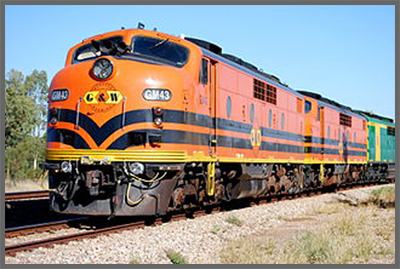
1896-Present New England Central RR
Since 1896 the New England Central line has changed hands many times. The line is currently owned and operated by Genesse & Wyoming Incorporated.
1896-1923 Grand Trunk Railway
1923-1995 Canadian National Railway
1995-2000 New England Central Railroad
2000-2012 Owed by RailAmerica
2012-Present Owed by Genesee & Wyoming
Acknowledgements
Wikipedia – New England Central RR
Wikipedia – Genesee & Wyoming
Wikipedia – The EMD GP40-2
RND

1898-1914 Alvah E Grimes Firearms
Alvah E. Grimes was a firearms designer in the early 1900s. He received several patents for his gun inventions and worked along with several other gunsmiths in Norwich.
On February 14, 1899 he was granted U.S. Patent 619,565 for a firearms cartridge ejector. The photo above illustrates his improved design of the ejector, which he also patented on October 13, 1914. This newly invented ejector would automatically throw out an empty shell from a rifle.
He later joined with Horace Smith and Daniel Wesson to form one of our nation’s most famous gun manufacturers, Smith & Wesson.
Acknowledgements
The Day 10/08/2012
U. S. Patent Office
U. S. Patent Office
RND
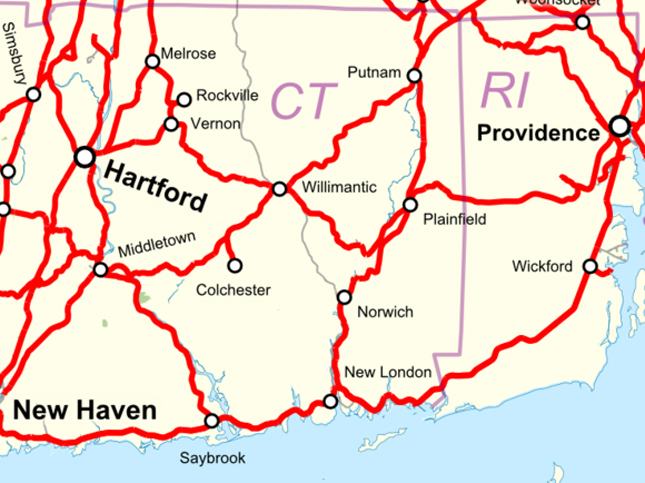
1898-1969 New Haven Railroad
In 1898 the Norwich & Worcester Railroad was acquired by the New York, New Haven and Hartford Railroad, commonly known as the New Haven.
The New Haven was a railroad that operated in the New England region of the United States from 1872 to 1968. It dominated the region's rail traffic for the first half of the 20th century. The line became bankrupt in 1935. It was reorganized and reduced in scope, and subsequently went bankrupt again in 1961. In 1969 the New Haven lines were merged with the Penn Central. Unfortunately, the next year Penn Central declared bankruptcy; becoming the largest bankruptcy in the U.S. history, up to that point in time.
The remnants of the system now comprise Metro-North Railroad's New Haven Line, and parts of Amtrak's Northeast Corridor, Shore Line East, the MBTA and freight operators such as CSX and the Providence & Worcester Railroad. The majority of the system is now owned publicly by the states of Connecticut, Rhode Island, and Massachusetts.
Acknowledgements
Wikipedia – New York, New Haven and Hartford Railroad
Wikipedia – New York, New Haven and Hartford Railroad
RND
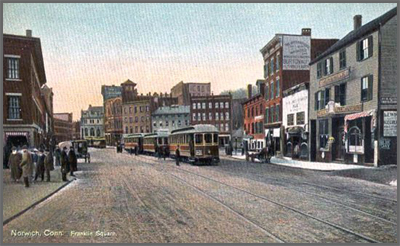
1900-1935 Norwich Street Railway
The image shows one of the Norwich Street Railway streetcars in Franklin Square. Franklin Square was the hub of the Norwich trolley system in the early 1900's.
By 1900 the Norwich trolley lines extended from Franklin Square nine miles to Baltic and five miles to Yantic. The trolley provided transportation for the employees of the large textile mills located there. Lines also ran to West Main Street, Boswell Avenue, and Laurel Hill; the more residential sections of Norwich.
In September 1904, the Norwich Street Railway was sold to the Consolidated Railway Company, a subsidiary of the powerful New York, New Haven & Hartford Railroad. The Norwich lines, along with the other city lines in New London County, operated almost unchanged from World War I through the 1930s. In 1935, the parent of the Connecticut Company filed for bankruptcy and could no longer fund the deficits of the trolley lines.
Acknowledgements
“Images of Rail, New London County Trolleys”, by Connecticut Motor Coach Museum, 2004
RND
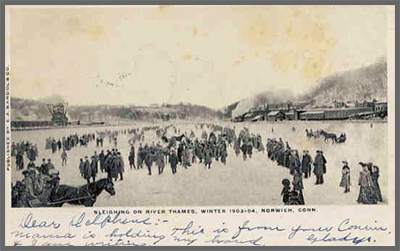
1903-1904 Horse Racing on Thames River
The Thames River can freeze over. During the winters of the early 1900's Norwich residents enjoyed horse and sleigh racing on the frozen Thames.
Acknowledgements
Wikipedia
Wikipedia
RND
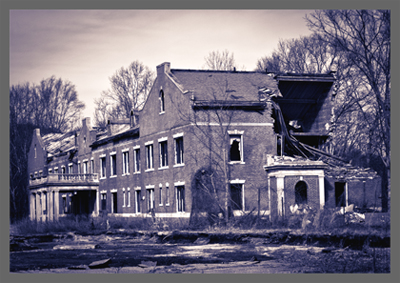
1904-1996 Norwich state hospital
The Norwich State Hospital, originally established as Norwich State Hospital for the Insane and later shortened to Norwich Hospital, was a psychiatric hospital. It opened its doors in October 1904 and it remained operational until October 1996. Throughout its years of operation, it housed geriatric patients, chemically dependent patients and, from 1931 to 1939, tubercular patients.
Its history is well documented. It is said that several of the buildings are now haunted by the spirits of past residents. Several references are listed below. Info Source 3, by Alchetron is especially informative.
The Gateway Building is shown in the photo.
Acknowledgements
SubStreet – “Norwich State Hospital for the Insane”
DamnedCT
Alchetron
Wikipedia
RND
RND
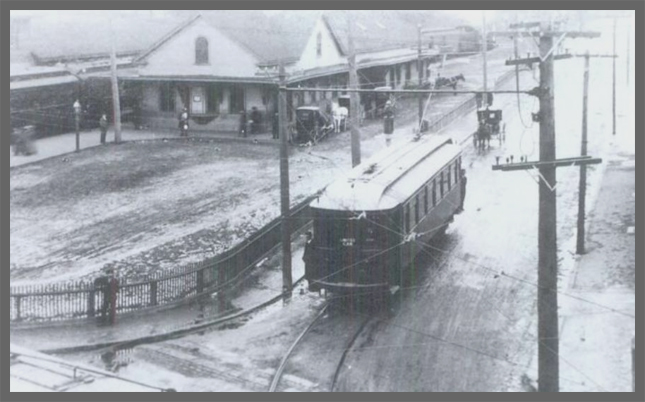
1906-1922 Norwich & Westerly Railway
The company was first chartered on May 11, 1903 as the Norwich, Mystic & Westerly Street Railway Company. The name was changed to the Norwich & Westerly Railway Company on December 12, 1905 after the Groton and Stonington Street Railway's Old Mystic branch negated the need for a N&W branch to Mystic.
Construction started early in 1906 and the first cars ran between Norwich and Hallville on August 18, 1906. The Westerly and Connecticut Railway was chartered in Rhode Island on March 13, 1906 and the first Norwich-Westerly through cars ran on November 12, 1906. The complete trolley line was estimated to cost $500,000.
Acknowledgements
Wikipedia
Wikipedia
RND

1907 Norwich & Westerly Railway Wreck
The line's only major accident occurred on August 1, 1907, when passenger car #2 and freight motor #1 collided at Avery's Crossing in North Stonington. Passengers Mr. and Mrs. Benjamin F. Gardiner were killed along #2's motorman, George H. Lucier.
Damage claims against the line exceeded $4,000
Acknowledgements
Wikipedia
Wikipedia
RND

1907 Buffalo Bill Visits Norwich
On July 2, 1907, American adventurer and showman “Buffalo Bill” Cody visited the Mohegan Royal Burial Grounds in Norwich. Colonel William F. Cody, who had begun his popular “Wild West” shows in the 1880s, was touring the Northeast when he came to lay a wreath on the site of the Uncas monument, a memorial to the Mohegan sachem. Cody was accompanied by two chiefs, Rocky Bear and Iron Tail of the Sioux tribe, as well as over 100 members of his traveling show.
The cornerstone of the Uncas monument had been laid on June 24, 1833, with President Andrew Jackson and Vice President Martin Van Buren attending the ceremony.
Acknowledgements
ConnecticutHistory.org
Norwich Bulletin 04/08/2017
RND
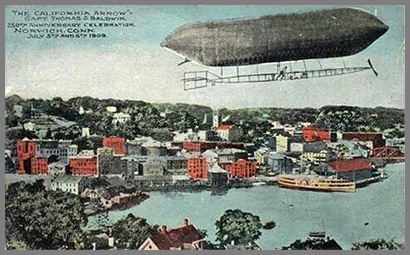
1909 Dirigible Flies In Norwich
As a part of Norwich's 250th Anniversary one of the first flying ships flew over the old fairgrounds in East Great Plain for several minutes. (Info Source #1). Every building downtown was decorated with red, white and blue buntings, and it was said to be, by those who lived there, the most spectacular celebration in Norwich history.
Long before the notorious 1937 crash of The Hindenburg in New Jersey, Norwich’s anniversary merited its own “airship.” For a fee of $1,000, ($ 23,573 in today's $), the California Arrow was engaged to “ascend” four times over the city and over President Taft from a lot of 40,000 square feet. For admissions of fifteen cents ($3.50 in today's $), its Captain, Thomas S. Baldwin of New York, lectured to visitors in a special tent. Proceeds returned to the Committee.
The postcard shown in the photo identifies the dirigible as the "California Arrow". It is actually the Baldwin #9, christened as the "California Arrow II". The first California Arrow was destroyed three years earlier on April 18, 1906 during the massive earthquake that struck San Francisco. (Info Source 3).
Acknowledgements
Norwich Bulletin 06/07/2009
The Muse, Spring 2008
WelWeb.org
Wikipedia
CardCow.com
RND
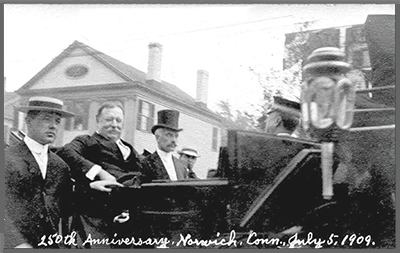
1909 President Taft Visits Norwich
As a part of Norwich's 250th Anniversary President William Howard Taft visited Norwich, and, spoke on the steps of the Norwich Courthouse.
He traveled to Norwich from Beverly, MA with his friend Winslow T. Williams. They stayed in Williams' mansion in Yantic. Williams is shown in the photo on Taft's left side. The man on Talt's right side is a Secret Service man.
Acknowledgements
Connecticut Judicial Branch
The Muse
RND
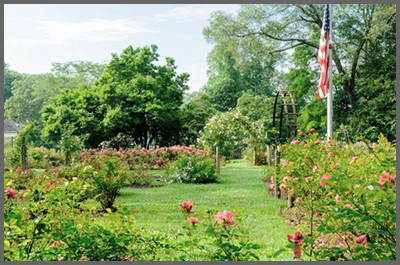
1947 Rose Garden Dedicated
Veterans Memorial Rose Garden (also known as Mohegan Memorial Rose Garden) was dedicated in 1948 (and re-dedicated in 2008) to honor veterans of World War II and has been maintained by the City of Norwich ever since. It is set on a half acre at the southern tip of Mohegan Park, a wooded city park full of trails, a swimming pond, and picnic areas.
A group of citizens led by Roy D. Judd in the 1940s determined that “The Rose City” should have a park befitting its name. They raised funds and hired Thomas H. Desmond, a landscape architect from Simsbury, to design the garden. Delayed by World War II, the rose garden was installed in 1947. Its first rose, “Lady Stanhope,” was planted April 16, 1947.
In 2008, the garden was enclosed by a tall fence to protect it from browsing deer, says Angelo Yeitz, the city’s superintendent of streets and parks. Today the beds are bursting with 120 rose varieties and 1,250 rose bushes.
Until 2013 the garden was a trial site for All American Rose Selections, a California company that provided roses in exchange for feedback about how they performed until the company closed in 2013. Memorial donations made in honor of a loved one are used to purchase new plants, as evidenced by plaques in the rose beds, an indication of the many visitors who have enjoyed the beauty of this rose garden.
Acknowledgements
Connecticut Explored
Lea Anne Moran
RND

1948 President Harry Truman Visits Norwich
In the spring of 1948, Truman began his famous Whistle Stop Tour of rural America, in which his speeches at each stop were made from the back of the caboose on his campaign train.
When his train stopped in Norwich, a large, enthusiastic crowd gathered and was told by the president that if the Republicans were to win the election, the country would go into a deep economic depression. The crowd began a most familiar chant, yelling, “Give ’em hell, Harry!”
The photo is of President Truman, Mrs. Truman and their daughter Margaret Truman at one of the stops of their tour.
Acknowledgements
Norwich Bulletin 12/21/2013
Cruise The Past
RND
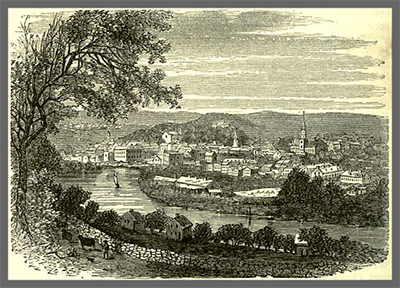
1952 Norwich Consolidated
The City of Norwich was incorporated in 1784, however, the City of Norwich and the town of Norwich were two separate
entities.
The city and the town were consolidated on January 1, 1952. The City of Norwich operates under the charter. The charter has been supplemented many times since 1952. The most current supplement (Supplement #20) was added June 21, 2018 (Info Source 4).
Part I - 'Charter and Related Laws', Subpart A-' Charter', Chapter I - 'Incorporation', Section 1 - 'Consoliation and Incorporation', of the most recent Norwich Charter reads :
"The inhabitants of the state of Connecticut dwelling in the town of Norwich, within the territorial limits of the community hitherto incorporated under the name of the city of Norwich, together with the inhabitants of that part of the town of Norwich not within the limits of said city, are constituted and declared to be one and the same body politic and corporate under the name of the "city of Norwich"; and by that name shall have perpetual succession and be capable of suing and being sued, pleading and being impleaded, and of purchasing, holding, managing and conveying any estate, real or personal; and may have a common seal and alter the same at pleasure; and shall be absolutely vested with, possess and enjoy all lands, tenements, hereditaments and all other property and rights in property which prior to the effective date of this charter were vested in the city and town of Norwich as then constituted."
Acknowledgements
American Cyclopædia, 1879
NorwichCt.org
Norwich Chamber of Commerce
Municode Library
American Cyclopædia, 1879
RND

1952 VP Candidate Richard Nixon Visits Norwich
In the fall of 1952 Richard Nixon visited Norwich during his campaign for Vice President. He was Dwight Eisenhower's running mate, and was elected as the 36th Vice President in November 1952.
On Nixon's right are Representative B. Maynard and Representative Jack McKenzie. On his left are Rene Dugas and Joe Goldberg.
Acknowledgements
Facebook : Norwich Ct.Pictures,USA
Facebook : Norwich Ct.Pictures,USA
RND

1954 USS Nautilus Launch
The USS Nautilus was launched into the Thames River on January 21, 1954. It was (SSN-571) was the world's first operational nuclear-powered submarine and the first submarine to complete a submerged transit of the North Pole on 3 August 1958. Her initial commanding officer was "Dennis" Wilkinson, a widely respected naval officer who set the stage for many of the protocols of today's Nuclear Navy, and had a storied career during military service and afterwards.
Acknowledgements
Wikipedia
U.S. Navy
RND

1956 VP Richard Nixon Visits Norwich
During the fall of 1956 Vice President Richard Nixon visited Norwich. He spoke at Chelsea Parade.
Acknowledgements
Norwich Bulletin 12/24/2017
Facebook : Norwich Ct.Pictures,USA
RND
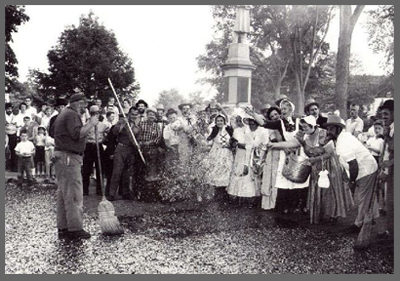
1959 Norwich Street of Gold
Well ... The street was actually paved with several barrels of hot tar laced with gold flake.
The idea was concocted by Bill Stanley and his brother Jimmy.
The publicity commitee, headed by Bill Stanley, contacted President Dwight Eisenhower, and, the story spread quickly. The Norwich Street of Gold
was on the front page of “The London Times,” “The New York Times,” “Time” magazine, and the nation’s most popular commentator, John Cameron Swayze, brought the “Camel Caravan” to Norwich, the hometown of Benedict Arnold.
It was all done in fun, and it got Norwich more recognition internationally and nationally than any other event.
Acknowledgements
Norwich Bulletin 06/07/2009
Norwich Bulletin 06/07/2009
RND

1976-Present Providence & Worcester Railroad
The Providence and Worcester Railroad is a Class II railroad currently owned by Genesee & Wyoming. On April 1, 1976, Providence & Worcester nearly tripled its operating territory and branched into the Connecticut. It was first incorporated in Massachusetts on March 12, 1844 and in Rhode Island in 1844 during the May session of the General Assembly. The two state-chartered companies merged on November 25, 1845, as the Providence and Worcester Railroad Company. The Providence & Worcester Railroad company was acquired by Genesee & Wyoming on January 3, 2017
Acknowledgements
Genesee & Wyoming website
Genesee & Wyoming website
RND

1994 Bill Clinton Visits Norwich
The photo is of President Clinton giving a speech in Slater Hall on the Norwich Free Academy campus on February 24, 1994.
Earliar in the day he stopped by a pharmacy on Central Avenue. He stood behind the counter there and listened to emotional stories of people's struggles to pay for prescription drugs.
He also listened as druggist John Kiszkiel, at the Greenville Drugstore, described the frequent dramas that play out in the shop that his father opened in 1951.
Acknowledgements
Chicago Tribune
c-span.org
RND